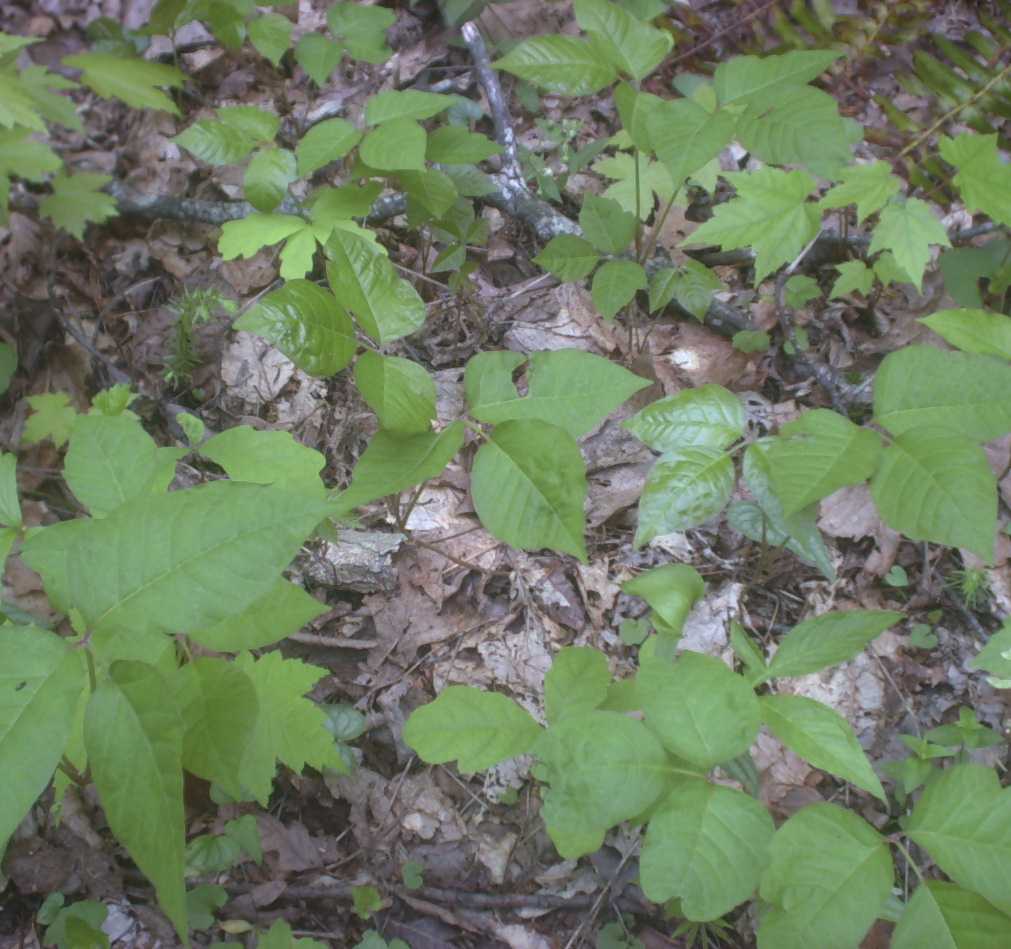How to Recognize Poison Ivy Plants<\title>" ;
?>
PoisonIvy
The best guide to practical information that you'll
use every day!
// -->

How to Recognize Poison Ivy
| It helps to see it! The photo below is filled with
it!
Characteristics:
- leaves in groups of 3
- The newer, younger leaves look very shiny, especially in the
spring. That shine is the poisonous oil!
- The leaves can have smooth edges or additional lobes or
serrations.
- The stem leading up to the leaf is often a reddish color
- Grows only in the sun, such as on the edges of footpaths in the
woods, or at the edges of woods, rarely in the deep shade.
If you do touch it (or touch a dog that has just been rolling in it)
wash all exposed skin as soon as possible (within an hour) with strong
soap (like laundry detergent, thoroughly. It is an allergen, so
removing it quickly is key.
There are blocking creams you can put on, before you go into the
woods. Larger drugs stores sell them. |
|
 |
|
| Note 90% of the plants in this photo are poison ivy,
there are a few small maple trees, like in the top left corner and towards
the top right. I assume you can figure out the obvious differences. |
|
What to do if you get poison ivy
If you get some of the poison ivy plant oil on you and don't realize it
and wash it off, you may get a rash. You may not; remember, it is an allergen,
and some people just aren't allergic to it. If you start to itch and see
red bumps, like small bug bits, but raised and hard, and many of them clustered
together, that is probably it.
First wash the affected area with a strong drying soap to remove as much
of the remaining plant oil as possible. Then apply a drying cream, like
Calamine lotion. You may also want to use an anti-itch cream, like
Lanacaine. And above all, do NOT scratch it! That spreads any
remaining oil, and if you create a cut, may open your skin to an infection.
And if you haven't had it before call your doctor just to be sure you
haven't misdiagnosed yourself!